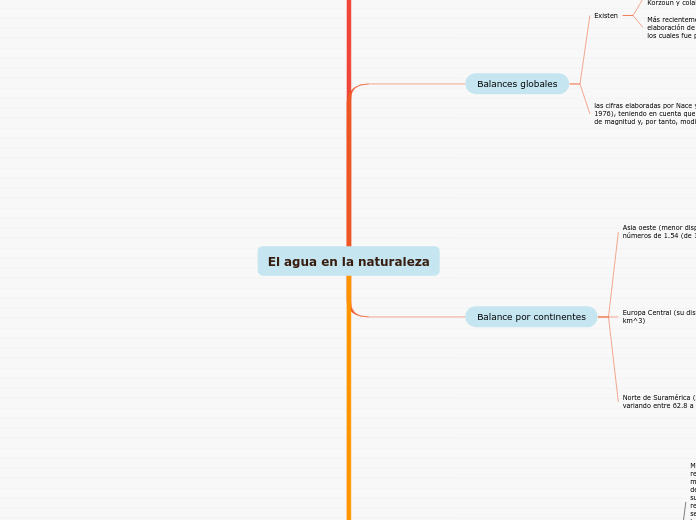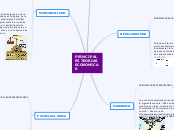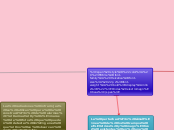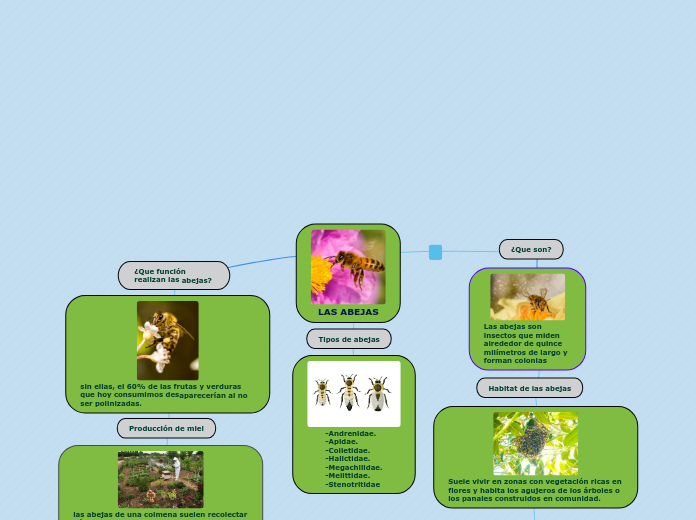El agua en la naturaleza
To name your story, you have to think about the overall message and what you want your audience to understand from the story. Also, make it relevant and easy to remember.
Importancia de las aguas subterraneas
ventajas que la explotación racional del agua
subterránea puede tener
se requieren menos tratamientos para
su uso
presentan un elevado nivel de autoprotección; ese mismo hecho permite un tiempo de actuación en caso de accidentes mucho más largo que en el caso de accidentes con vertido en aguas superficiales
tienen parámetros físico-químicos sensiblemente constantes en condiciones normales
son menos sensibles que los ríos
a las variaciones de la alimentación (las precipitaciones)
Hay grandes volúmenes almacenados (en España unos 500 km3 frente a los 50 km3 almacenados en todos los embalses)
Mientras que las aguas de superficie han sido
reguladas mediante unos sistemas de usos y manejos y unas normas que favorecieron su uso
de manera mas o menos racional, las aguas subterráneas no parecen importar, salvo en las
regiones de clima semiárido o en los períodos de sequía, cuando actúa una especie de “ley de
la selva” que suele llevar aparejado un mal uso y unas consecuencias indeseables a medio o largo plazo.
España
La experiencia permite considerar al agua subterránea como un recurso estratégico prácticamente único en las
sequías acusadas recientemente vividas (principio de los ochenta, 1995 y 2005).
Canadá
donde la protección del
medioambiente ha hecho que las aguas subterráneas sean muy bien conocidas y protegidas,
arriesgando severas penas los infractores de las estrictas normas vigentes.
Balance por continentes
The ending of a story is essential. We all know that if the ending is weak, what happened before loses its importance. So make it unpredictable, but fair. A resolved ending answers all the questions and ties up any loose threads from the plot.
Norte de Suramérica (su disponibilidad es la mayor variando entre 62.8 a 44.6 km^3)
Europa Central (su disponibilidad se mantiene en 2 km^3)
This is the closure section of the story.
See examples of possible outcomes below:
- all problems have been solved
- it's clear how each one of your characters ends up
- your main character is transformed by the challenge
Domestico
Try answering these questions in order for you to come up with a closure:
- Have all problems been solved?
- Is it clear what happens with all your characters in the story?
- Has the challenged transformed your main character?
- How do the characters feel in the end?
Try answering these questions to come up with a closure:
- Have all the problems been solved?
- Is there a clear picture of what happens with each character in the story?
- Has the challenge transformed your main character?
- How do the characters feel in the end?
Asia oeste (menor disponibilidad de agua, varían números de 1.54 (de 1990) a .84 (2010) km^3)
This is the moment when the main character surpasses the last obstacle and finally faces their greatest challenge.
The climax usually follows one of these patterns:
- realization
- resolution
- choice
Type in your answer.
Embalses
Doméstico
Industria
Agricultura
Zona de regadio (19^6 ha)
Balances globales
The middle of the story is where you add layers of complications that will lead to the end. Reveal more about the character's journey. Did their personality go through changes? How did they overcome the challenges? And as you build up the story’s central conflict, make it more personal to that character. Also, from the middle act, you have to lead into the final act.
las cifras elaboradas por Nace y Lvovitch (in Llamas, 1976), teniendo en cuenta que se trata de órdenes de magnitud y, por tanto, modificables y matizables.
Your character(s) need(s) motivation in order to solve the challenge(s).
Distribución del agua en la naturaleza
Why does your character need to confront this challenge? What does he/she expect to accomplish by solving it?
See a few examples:
- will marry in 3 days
- can fix the mistakes of the past
0.001% atmosfera
Rios 0.00%
Lagos de agua dulce .37%
Lagos de agua salada .33%
Humedales .41%
Casquetes de hielo y glaciares 78.28%
Agua subterránea 20.6%
2.4%Tierras sumergidas
97.6% oceanos
Existen
Each story has a main character and that character usually needs to solve a problem or challenge. The character's challenge is the one that creates tension throughout the story.
Más recientemente UNESCO ha propiciado la elaboración de balances actualizados, el último de los cuales fue presentado en Paris en 1999.
Type in any other challenges which other characters in the story need to face.
uno de los más completos fue el elaborado por Korzoun y colaboradores (1980), todos ellos rusos.
In most stories, there are 3 challenges. The number 3 is a mystical number symbolizing completeness. Try to come up with interesting challenges with which your character needs to struggle.
See a few examples below:
- turns into a werewolf at night
- is sent back in time
Aspectos básicos de la hidrología
In the beginning of the story (or the exposition), you will need to introduce the setting and characters. You might also want to introduce the main conflict. This part of the story is important because it gives the reader necessary background information and maybe even a first insight into a character’s personality.
El agua contenida en estado de
The setting (time & place) of a story can change throughout the plot.
Del agua que alcanza la superficie de la tierra
The weather is an important element in your story because it can highly influence the ambiance and the mood of the characters.
Otra porción de la precipitación se infiltra en el terreno, en los poros y fisuras, con una porción de la misma que percola en profundidad y otra que es retenida para posterior evaporación, y uso en las actividades biológicas de los seres vivos –transpiración-; al conjunto de estas dos últimas se denomina evapotranspiración.
The most affected character is the main character. Write down here if he/she is affected by these weather conditions in any way. For example, if they lost a family member or their home during a hurricane, etc.
Parte se une y escurre hacia los ríos -escorrentía superficial- que irá a parar al mar o a los lagos, para evaporarse posteriormente, o infiltrarse parcialmente en el terreno.
Decide if you want to include an element of nature in your story. For example, a rainbow can be a very nice choice for a happy ending. The mist in a story can represent mystery and secrets. A thunder can appear in the background at the moment when the 'bad guy' of the story makes its appearance, etc.
Una pequeña porción es retenida en las irregularidades del terreno -almacenamiento superficial-
Does your story include catastrophic weather? See a few suggestions below or add your own:
- hurricane, earthquake, storm, etc
Parte de la precipitación
The time of the story can also change. It can describe the event of a single day or can include an entire year's plot. Anyway, don't forget to mention it.
Otra es retenida en las hojas, edificaciones, carreteras –interceptación– volviendo a la atmósfera de nuevo en estado de vapor.
No llega a alcanzar la superficie de la tierra, por evaporación
vapor en la atmósfera
Your story can take place wherever your imagination will take you to.
For example: in an elevator, in an enchanted forest, etc. Don't forget to give details of the environment each time the setting changes, otherwise, the story can be confusing. Also, mention the seasons as each of them has unique weather and events.
Parte de este vapor se condensa, dando origen a las precipitaciones en forma liquida (lluvia) o sólida (nieve, esencialmente).
Ciclo Hidrológico
Characters are essential to a good story. Usually, the protagonist(s) is/are the most affected by the plot. Introduce a character by focusing on their actions, interests, and occupation, as the physical appearance doesn't make a difference in most cases.
Se permite abordar la cuestión en cualquiera de sus etapas, y supone un movimiento o transferencia de masas de agua, como consecuencia de un flujo energético, de forma continua.
Type in the name of your character.
el ciclo completo
What is your character's main goal?
fight Evilfind lovedefeat his/her enemyrule the worldmake friendstime travelmake an awesome discoveryOther
escorrentía (superficial y subterránea)
Add other qualities/attributes of the character.
Precipitación
Which traits best describe the character's personality? Choose more if necessary:
introvertedloyalkindindependentquick-thinkingadventuresomeidealisticsweet-naturedcalmrisk-takercreativewittystrictfussyweirdclumsyharshaggressivecarelessclingingcowardlycrueldeceitfulimpulsiveOther
Evaporación
Add other properties of the character.










